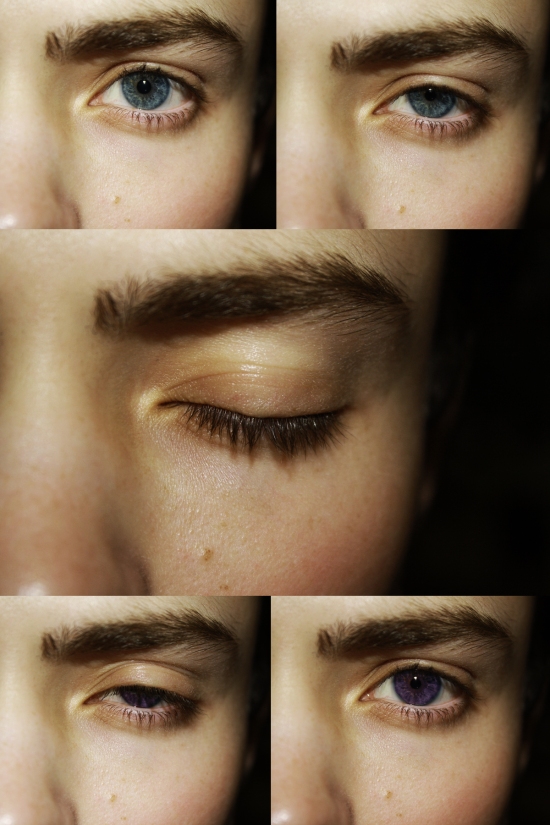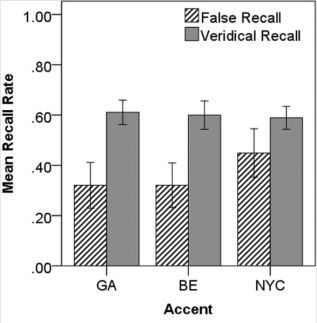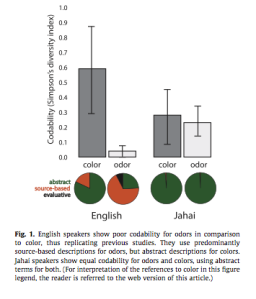
If you’re like most people, you spend a great deal of your time remembering past events and planning or imagining events that may happen in the future. While these activities have their uses, they also make it terribly hard to keep track of what you have and haven’t actually seen, heard, or done. Distinguishing between memories of real experiences and memories of imagined or dreamt experiences is called reality monitoring and it’s something we do (or struggle to do) all of the time.
Why is reality monitoring a challenge? To illustrate, let’s say you’re at the Louvre standing before the Mona Lisa. As you look at the painting, visual areas of your brain are busy representing the image with specific patterns of activity. So far, so good. But problems emerge if we rewind to a time before you saw the Mona Lisa at the Louvre. Let’s say you were about to head over to the museum and you imagined the special moment when you would gaze upon Da Vinci’s masterwork. When you imagined seeing the picture, you were activating the same visual areas of the brain in a similar pattern to when you would look at the masterpiece itself.*
When you finally return home from Paris and try to remember that magical moment at the Louvre, how will you be able to distinguish your memories of seeing the Mona Lisa from imagining her? Reality monitoring studies have asked this very question (minus the Mona Lisa). Their findings suggest that you’ll probably use additional details associated with the memory to ferret out the mnemonic wheat from the chaff. You might use memory of perceptual details, like how the lights reflected off the brushstrokes, or you might use details of what you thought or felt, like your surprise at the painting’s actual size. Studies find that people activate both visual areas (like the fusiform gyrus) and self-monitoring regions of the brain (like the medial prefrontal cortex) when they are deciding whether they saw or just imagined seeing a picture.
It’s important to know what you did and didn’t see, but another crucial and arguably more important facet of reality monitoring involves determining what you did and didn’t do. How do you distinguish memories of things you’ve actually done from those you’ve planned to do or imagined doing? You have to do this every day and it isn’t a trivial task. Perhaps you’ve left the house and headed to work, only to wonder en route if you’d locked the door. Even if you thought you did, it can be hard to tell whether you remember actually doing it or just thinking about doing it. The distinction has consequences. Going home and checking could make you late for work, but leaving your door unlocked all day could mean losing your possessions. So how do we tell the possibilities apart?
Valerie Brandt, Jon Simons, and colleagues at the University of Cambridge looked into this question and published their findings last month in the journal Cognitive, Affective, and Behavioral Neuroscience. For the first part of the experiment (the study phase), they sat healthy adult participants down in front of two giant boxes – one red and one blue – that each contained 80 ordinary objects. The experimenter would draw each object out of one of the two boxes, place it in front of the participant, and tell him or her to either perform or to imagine performing a logical action with the object. For example, when the object was a book, participants were told to either open or imagine opening it.
After the study phase, the experiment moved to a scanner for fMRI. During these scans, participants were shown photographs of all 160 of the studied objects and, for each item, were asked to indicate either 1) whether they had performed or merely imagined performing an action on that object, or 2) which box the object had been drawn from.** When the scans were over, the participants saw the pictures of the objects again and were asked to rate how much specific detail they’d recalled about encountering each object and how hard it had been to bring that particular memory to mind.
The scientists compared fMRI measures of brain activation during the reality-monitoring task (Did I use or imagine using that object?) with activation during the location task (Which box did this object come from?). One of the areas they found to be more active during reality monitoring was the supplementary motor area, a region involved in planning and executing movements of the body. Just as visual areas are activated for reality monitoring of visual memories, motor areas are activated when people evaluate their action memories. In other words, when you ask yourself whether you locked the door or just imagined it, you may be using details of motor aspects of the memory (e.g., pronating your wrist to turn the key in the lock) to make your decision.
The study’s authors also found greater activation in the anterior medial prefrontal cortex when they compared reality monitoring for actions participants performed with those they only imagined performing. The medial prefrontal cortex encompasses a respectable swath of the brain with a variety of functions that appear to include making self-referential judgments, or evaluating how you feel or think about experiences, sensations, and the like. Other experiments have implicated a role for this or nearby areas in reality monitoring of visual memories. The study by Brandt and Simons also found that activation of this medial prefrontal region during reality-monitoring trials correlated with the number of internal details the participants said they’d recalled in those trials. In other words, the more details participants remembered about their thoughts and feelings during the past actions, the busier this area appeared to be. So when faced with uncertainty about a past action, the medial prefrontal cortex may be piping up about the internal details of the memory. I must have locked the door because I remember simultaneously wondering when my package would arrive from Amazon, or, because I was also feeling sad about leaving my dog alone at home.
As I read these results, I found myself thinking about the topic of my prior post on OCD. Pathological checking is a common and often disruptive symptom of the illness. Although it may seem like a failure of reality monitoring, several behavioral studies have shown that people with OCD have normal reality monitoring for past actions. The difference is that people with checking symptoms of OCD have much lower confidence in the quality of their memories than others. It seems to be this distrust of their own memories, along with relentless anxiety, that drives them to double-check over and over again.
So the next time you find yourself wondering whether you actually locked the door, cut yourself some slack. Reality monitoring ain’t easy. All you can do is trust your brain not to lead you astray. Make a call and stick with it. You’re better off being wrong than being anxious about it – that is, unless you have really nice stuff.
_____
Photo credit: Liz (documentarist on Flickr), used via Creative Commons license
* Of course, the mental image you conjure of the painting is actually based on the memory of having seen it in ads, books, or posters before. In fact, a growing area of neuroscience research focuses on how imagining the future relies on the same brain areas involved in remembering the past. Imagination seems to be, in large part, a collage of old memories cut and pasted together to make something new.
**The study also had a baseline condition, used additional contrasts, and found additional activations that I didn’t mention for the sake of brevity. Check out the original article for full details.
Brandt, V., Bergström, Z., Buda, M., Henson, R., & Simons, J. (2014). Did I turn off the gas? Reality monitoring of everyday actions Cognitive, Affective, & Behavioral Neuroscience, 14 (1), 209-219 DOI: 10.3758/s13415-013-0189-z








